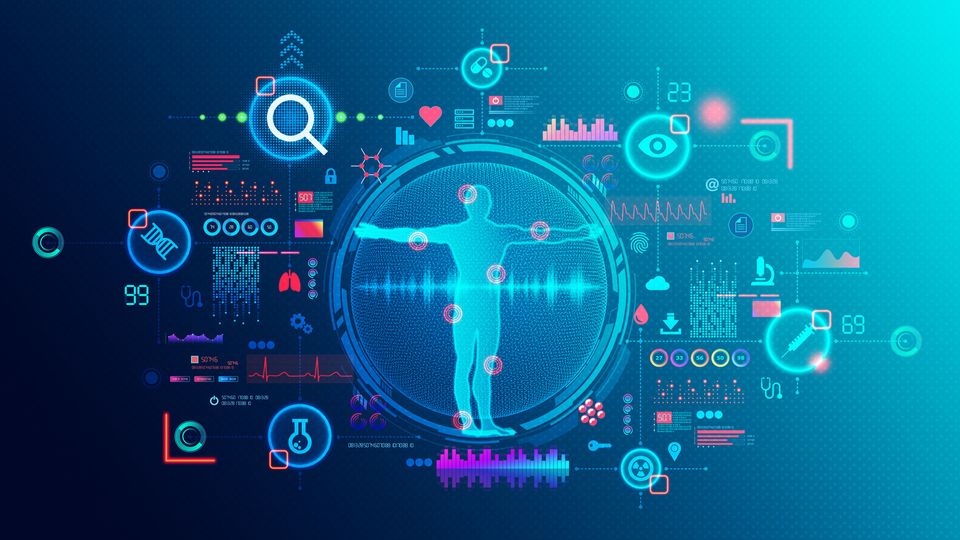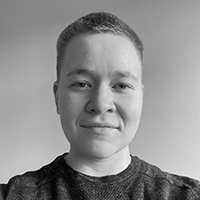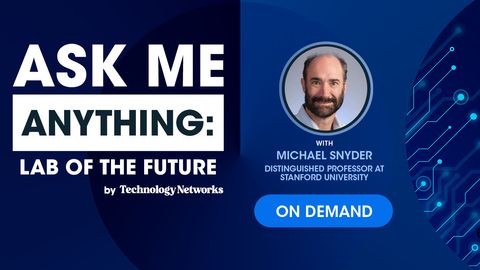The Future of Digital Health With Professor Michael Snyder
Sharing data and aggregating data – with the consent of the individual – is for the good of all.

Complete the form below to unlock access to ALL audio articles.
Michael Snyder, Stanford W. Ascherman professor of genetics, is a leader in the field of functional genomics and proteomics.
Snyder has combined different state-of-the-art "omics" technologies to perform the first longitudinal detailed integrative personal omics profile (iPOP) and has used this to assess disease risk and monitor disease states for personalized medicine.
Technology Networks invited Snyder to an Ask Me Anything session to answer your questions about the latest technologies and innovations that are shaping the future of digital health.
Lucy Lawrence (LL): What sparked your interest in lab digitalization?
Michael Snyder (MS): Well, I think the healthcare system is broken. We tend to go to a physician only when we're ill rather than try and keep ourselves healthy.
There are many steps involved in healthcare. You have to travel, usually at a very inconvenient time, to a doctor's office, which pretty much looks the same as it did 40 years ago. When you're there, they stick a needle in you and draw blood, and from that blood, they'll make very few measurements. Then they'll make decisions about your health based on population averages, calculating a mean of your measurements, and compare it with everyone else's.
So, we think every one of those steps can be changed. And I think one big part of it is pulling in big data.
LL: How can wearable technology bridge the gap between lab research and clinical applications?
MS: Right now, this is all research, but a small number of wearable devices are approved by the US Food and Drug Administration (FDA).
The reason we're very keen on wearables is because they're measuring you 24/7. In a physician's office, you get 15 minutes, then they make a measurement, and most people are anxious, so the measurements aren’t always accurate.
Wearables run in the background and measure heart rate and heart rate variability, which are important health monitors, and because they can take your resting heart rate first thing in the morning, they're quite accurate.
So, if something is off, it’s likely that you're either ill mentally or physically.
When I had presymptomatic Lyme disease, my smartwatch showed that my heart rate jumped up and my blood oxygen dropped, and after blood tests, I was given a diagnosis.
In a real-time detection study, we have also shown that you can tell someone with COVID-19 is unwell. Our real-time alerting system can detect illness three days prior to symptom onset, and it's more sensitive than an antigen test in some cases.
If you’d like to sign up to a study, follow this link.
LL: What do you see being the future of digital health and lab tech, relating to diabetes?
MS: Historically, glucose monitors have mainly been useful for type one diabetics and insulin dependent type two diabetics, but we started putting these monitors on people without diabetes and those with prediabetes.
In doing this, we discovered that a lot of “normal” people’s glucose spiked just as high as those with diabetes, which could be an indication of those on their way to becoming diabetic.
Glucose monitors are powerful, because what spikes an individual’s glucose is very personalized, meaning some people spike in response to bananas, others to potatoes, etc. Nearly everybody spikes in response to rice and cornflakes. These differences are partially due to the microbiome, along with genetic and epigenetic factors.
Apps have been developed that utilize continuous glucose monitors to make personalized recommendations on what foods to eat, what to avoid, what times to eat and how to exercise.
In Europe, glucose monitors can be bought over the counter, but in the United States, you still need a physician to order them. I think monitors will soon be accessed more easily for everyone.
The ultimate goal is to get your glucose levels under control early. While this may not prevent you from becoming diabetic, it could at least delay things for a few years. That's what health monitoring is all about, trying to keep yourself healthy as opposed to trying to fix yourself when you're ill.
LL: Do you see virtual reality playing a role in digital health?
MS: We'll certainly see a role in health in general. I think that people would prefer not to go to a physician for most things, but rather, want to know what's going on right there and then.
Virtual reality could allow people to choose a time convenient for them to have a checkup, and they could go to a physician in person for more serious things.
Using virtual health doctors mediated through virtual reality could help people relate to things better.
Right now, we're used to thinking in two dimensions and that works fine, but as these new platforms come out, we’ll likely get better about thinking of them in three dimensions.
From a research lab standpoint, virtual reality would be highly useful and more accurate for training than watching a video.
LL: Will data commons, with the consent of the individual, be a good direction to go in?
MS: Sharing data and aggregating data – with the consent of the individual – is for the good of all.
There are millions of people with health records who have used medications. If you have a health condition, it would be good to know about other people with the same condition, what drugs they have taken and the outcomes of treatment. There's a lot of data out there on that, but it's not shared.
Companies that pull in these kinds of data do exist. They try and use the data for health recommendations, something that’s been done a lot in an academic environment, as well.
These days, most things are being done in a federated fashion, meaning that each hospital doesn’t share their data, but they give access to it. So, you can run a search on the data, and they can tell you what their outcomes look like, which is better than nothing.
It's not as good as if everyone shared their data, but we're still working our way through this.
Professor Michael Snyder was speaking to Lucy Lawrence, Senior Digital Content Producer for Technology Networks.





